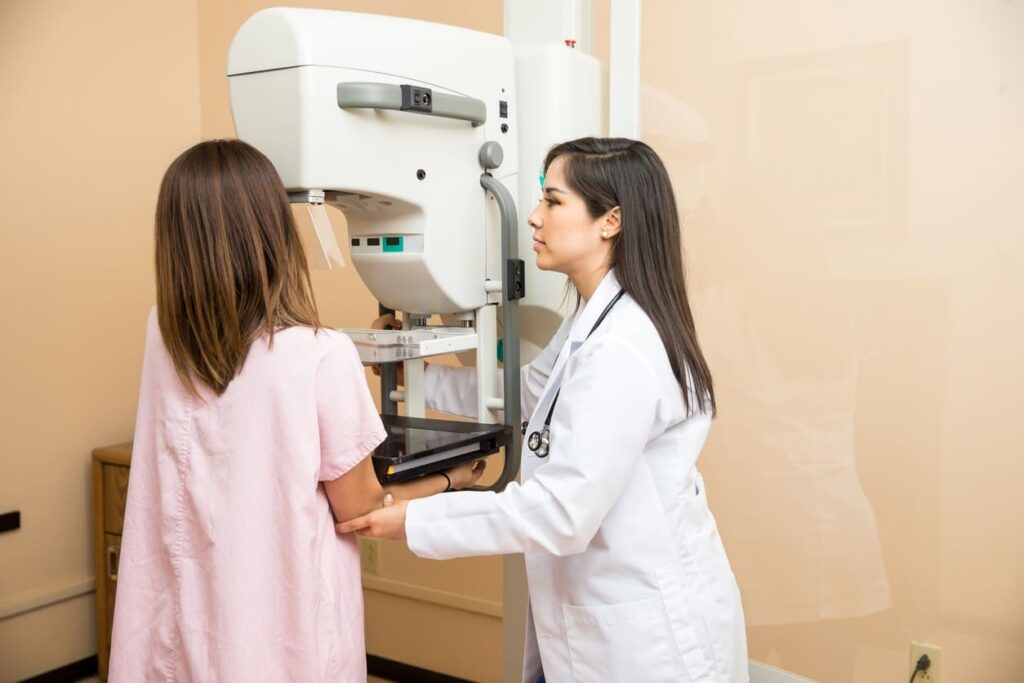Mammograms Explained: A Guide to Early Breast Cancer Detection
Share IT

Launch Your Dream Website with Us!
Click Here to Get in touch with Us.
Categories
Mammograms
Mammography: Your Resource for Early Detection of Breast Cancer
One essential weapon in the fight against breast cancer is mammography. This blog post delves further into the topic of mammograms, including their operation, advantages, and disadvantages as well as how they help discover breast cancer early and, ultimately, save lives.
Thank you for reading this post, don't forget to subscribe!Table of Contents

A mammogram: what is it?
A low-dose X-ray imaging method used exclusively to look at breast tissue is called a mammogram. To get clear images, the breast is squeezed between two plates throughout the operation. These scans can show anomalies that may be signs of cancer or precancerous alterations, such as lumps, masses, calcifications, or changes in breast tissue density.
Advantages of Screening for Breast Cancer:
- Early Detection: Mammography is quite good at identifying breast cancer in its early stages, frequently prior to the development of a palpable lump. The likelihood of a favourable outcome is greatly increased and additional treatment options are made possible by early identification.
- Decreased Mortality: Research indicates that routine mammograms can considerably lower the death rates from breast cancer. Better results can be achieved by starting therapy for cancer early on, before it has an opportunity to spread.
- Peace of mind: For women who are worried about their risk of breast cancer, routine mammograms might bring them comfort. Being aware that you’ve been screened can help you feel more in control and less anxious.
The constraints of mammography
- False Positives: Occasionally, abnormalities detected by mammograms turn out to be benign, rather than malignant. This may result in needless worry and more testing, such as biopsies.
- Limitations of Dense Breast Tissue: Dense breast tissue may conceal underlying issues by appearing white on mammograms. Ultrasound is a potential supplementary screening technology that could be beneficial for women with thicker breasts.
- Radiation Exposure: Although a mammogram’s radiation dose is minimal, it is nonetheless there. The risk-benefit ratio is taken into account, particularly with regard to younger women.
Who Needs A Breast Exam?
The following recommendations for mammography screening are made by the American Cancer Society:
- Women at Average Risk: Women who have an average risk of breast cancer should think about getting mammograms starting around age 40. Mammograms should be done annually between the ages of 45 and 54, with the option to convert to every other year starting at age 55.
- High-Risk Women: Women who have a higher risk of developing breast cancer because of genetics, family history, or other risk factors may need to start screening sooner or get mammograms more frequently. See your physician for advice specific to you.
What to anticipate from a mammography:
To produce crisp images, a technologist will place each breast on a specialised platform and compress it between two plates.
While some discomfort may be felt during the compression, it is usually minimal and bearable.
Every breast will be X-rayed multiple times from various perspectives.
Usually, the entire process takes between fifteen and thirty minutes.
Following Your Breast Exam:
Your doctor will receive the results of the mammography photos that a radiologist has reviewed.
Your results could arrive in a few days or weeks.
In accordance with suggested protocols, you will probably be booked for your subsequent screening if a normal mammography is reported.
To further analyse the results of an abnormal mammography, other imaging procedures such as diagnostic mammograms, breast ultrasounds, or MRIs may be necessary.
Taking Charge of Your Health: Breastfeeding
Mammography is an effective method for identifying breast cancer early on. Together with your physician, you can decide on the best screening plan by being aware of its advantages and disadvantages.
Recall that effective treatment for breast cancer depends on early detection. Consult your physician about your unique risk factors to develop a customised screening programme for breast cancer.

Launch Your Dream Website with Us!
Click Here to Get in touch with Us.





























































Recent Comments